
IA260 WinCE User’s Manual
The software described in this manual is furnished under a license agreement and may be used only in
accordance with the terms of that agreement.
Copyright Notice
Copyright © 2009 Moxa Inc.
All rights reserved.
Reproduction without permission is prohibited.
Trademarks
MOXA is a registered trademark of Moxa Inc.
All other trademarks or registered marks in this manual belong to their respective manufacturers.
Disclaimer
Information in this document is subject to change without notice and does not represent a commitment on the
part of Moxa.
Moxa provides this document “as is,” without warranty of any kind, either expressed or implied, including, but
not limited to, its particular purpose. Moxa reserves the right to make improvements and/or changes to this
manual, or to the products and/or the programs described in this manual, at any time.
Information provided in this manual is intended to be accurate and reliable. However, Moxa assumes no
responsibility for its use, or for any infringements on the rights of third parties that may result from its use.
This product might include unintentional technical or typographical errors. Changes are periodically made to the
information herein to correct such errors, and these changes are incorporated into new editions of the
publication.
Technical Support Contact Information
www.moxa.com/support
Moxa Americas:
Toll-free: 1-888-669-2872
Tel: +1-714-528-6777
Fax: +1-714-528-6778
Moxa China (Shanghai office)
:
Toll-free: 800-820-5036
Tel: +86-21-5258-9955
Fax: +86-10-6872-3958
Moxa Europe
:
Tel: +49-89-3 70 03 99-0
Fax: +49-89-3 70 03 99-99
Moxa Asia-Pacific
:
Tel: +886-2-8919-1230
Fax: +886-2-8919-1231

Table of Contents
Chapter 1 Introduction..................................................................................................1-1
Overview.................................................................................................................................. 1-2
Model Descriptions and Package Checklist............................................................................. 1-2
Product Features ...................................................................................................................... 1-3
Software Specifications ........................................................................................................... 1-3
Application Development Environment..................................................................... 1-3
Networking and Communications Capabilities.......................................................... 1-4
Supported Servers and Daemons................................................................................ 1-4
Firmware Build Versions ......................................................................................................... 1-5
Memory and File Systems ....................................................................................................... 1-5
Hive-based Registry (not RAM-based).................................................................................... 1-5
Inserting a CompactFlash Card................................................................................................ 1-5
Inserting a USB Mass Storage Device..................................................................................... 1-6
RS-232/422/485 Serial Ports.................................................................................................... 1-6
Chapter 2 Getting Started.............................................................................................2-1
Powering on the IA260............................................................................................................ 2-2
Resetting the IA260-CE Computer.......................................................................................... 2-2
Rebooting the IA260-CE Computer ........................................................................................ 2-2
Boot Loader............................................................................................................................. 2-3
Operating the IA260-CE Computer via Serial Console........................................................... 2-3
Changing the Network Settings............................................................................................... 2-4
Virtual Private Network (VPN)................................................................................................ 2-6
Operating the IA260-CE Computer via Telnet......................................................................... 2-7
User/Group Management......................................................................................................... 2-7
Adjusting the Time Zone ......................................................................................................... 2-8
Adjusting the System Time...................................................................................................... 2-8
Starting and Stopping Services ................................................................................................ 2-8
Troubleshooting Network Connectivity................................................................................... 2-9
Simple Network Management Protocol (SNMP)................................................................... 2-10
SNMP Agent............................................................................................................ 2-10
SNMP Manager........................................................................................................ 2-10
Accessing Files through File Sharing .....................................................................................2-11
Configuring the FIFO ............................................................................................................ 2-14
Chapter 3 Management Tools.......................................................................................3-1
System Information.................................................................................................................. 3-2
Serial Port Configuration......................................................................................................... 3-2
Process (Thread) Monitoring/Control...................................................................................... 3-3
Services Monitoring/Control ................................................................................................... 3-3
Display..................................................................................................................................... 3-4
User/Group Management......................................................................................................... 3-5
Auto Launch Configuration..................................................................................................... 3-6
Web Server Configuration ....................................................................................................... 3-6
Appendix A Firmware Upgrade Procedure....................................................................A-1

1
1
Chapter 1 Introduction
Microsoft® Windows® CE 6.0 is an open, scalable, 32-bit operating system (OS) that allows you
to build a wide range of innovative, small footprint devices. A typical Windows® CE-based
device is designed for a specific use, and often runs disconnected from other computers, or
distributed as a front-end to a centralized host. Examples include enterprise tools, such as
industrial controllers, communications hubs, point-of-sale terminals, and display devices, such as
HMI, advertisement appliances, and interactive panels.
Moxa’s IA260 ready-to-run embedded computer provides Windows® developers with an
excellent Windows® CE solution. Moxa’s extensive experience in kernel development on
embedded small footprint communication devices provides the intense technological skills
required while porting the Windows® CE 6.0 kernel.
The following topics are covered in this chapter:
Overview
Model Descriptions and Package Checklist
Product Features
Software Specifications
¾ Application Development Environment
¾ Networking and Communications Capabilities
¾ Supported Servers and Daemons
Firmware Build Versions
Memory and File Systems
Hive-based Registry (not RAM-based)
Inserting a CompactFlash Card
Inserting a USB Mass Storage Device
RS-232/422/485 Serial Ports

IA260 WinCE User’s Manual Introduction
Overview
The IA260 embedded computers feature 4 RS-232/422/485 serial ports, dual Ethernet ports, 8
digital input channels, 8 digital output channels, VGA output, 2 USB hosts and a CompactFlash
socket in a compact, industrial-strength aluminum rugged casing. The DIN-Rail vertical form
factor makes the IA260 a cost effective solution for installation in small cabinets. This
space-saving solution also makes wiring easy, and is the best front-end embedded controller for
industrial applications.
Because of its VGA output capability, the IA260 can be used for protocol conversion or data
acquisition for field site devices, and is also suitable for SCADA systems in industrial applications,
such as manufacturing automation, production line process monitoring, and mining automation. It
can serve as an operator interface terminal at a field site by connecting a VGA monitor and
appropriate HMI software.
The IA260 comes with RS-232/422/485 ports, digital inputs and outputs, and dual LAN ports,
making it an ideal communication platform for redundant network applications.
In addition to the standard model, the IA260 also comes in a wide temperature model. The
IA260-T has an operating temperature range of -40 to 75°C, making it suitable for harsh industrial
automation environments. The IA260’s industrial design provides robust and reliable computing,
and the RISC-based architecture allows the IA260 to operate without generating too much heat.
The high communication performance and fan-less design make the IA260 ideal for industrial
automation environments.
The IA260 embedded computer uses a Cirrus Logic EP9315 ARM9, 32-bit, 200 MHz RISC CPU.
Unlike the X86 CPU, which uses a CISC design, the RISC design architecture and modern
semiconductor technology provide the IA260 with a powerful computing engine and
communication functions, but without generating a lot of heat. The built-in 32 MB NOR Flash
ROM and 128 MB SDRAM give you enough memory to run your application software directly on
the IA260.
The IA260 comes with the Windows CE 6.0 operating system pre-installed. WinCE 6.0 supports
general Windows and .NET CF 2.0 environments. This means that programs developed with
standard programming tools such as Embedded Visual C++ or Visual Studio 2005 in Windows PC
environments can operate on the IA260 without too much porting effort.
Model Descriptions and Package Checklist
Two models of the IA260 are available:
IA260-CE
RISC-based embedded computer with VGA, 4 serial ports, dual LANs, DIO, CompactFlash, USB,
WinCE 6.0
IA260-T-CE
RISC-based embedded computer with VGA, 4 serial ports, dual LANs, DIO, CompactFlash, USB,
WinCE 6.0, wide operating temperature
Both models are shipped with the following items:
y 1 IA260 Embedded Computer
y Wall-Mounting Kit
y DIN-Rail Mounting Kit (attached to the product’s casing)
y Quick Installation Guide
y Document & Software CD
y Ethernet Cable: RJ45 to RJ45 cross-over cable, 100 cm
1-2

IA260 WinCE User’s Manual Introduction
y CBL-4PINDB9F-100: 4-pin header to DB9 female console port cable, 100 cm
y Universal Power Adaptor
y Product Warranty Statement
NOTE: Notify your sales representative if any of the above items are missing or damaged.
Product Features
y Cirrus Logic EP9315 ARM9 CPU, 200 MHz
y 128 MB RAM on-board, 32 MB Flash Disk
y VGA interface for field site monitoring
y 4 RS-232/422/485 serial ports
y Dual 10/100 Mbps Ethernet ports for network redundancy
y 8+8 DI/DO channels
y 12 to 48VDC power input design
y Supports CF socket and USB 2.0 Host
y Ready-to-Run WinCE 6.0 platform
y -40 to 75°C wide temperature model available
Software Specifications
IA260 WinCE ready-to-run embedded computers are network centric / head-less computers that
are designed to be programmable for embedded communication applications. The software
features of the IA260-CE are listed below:
Application Development Environment
To make the IA260-CE easy to program, its Windows® CE environment provides the following
common, popular application development features that make programming as convenient and
easy as in a PC environment.
y C Libraries and Run-times—Compared to the C libraries and run-times used on a desktop
PC running Windows®, the C libraries and run-times on an IA260-CE are a subset of the
WIN32 APIs. They support full ANSI C run time, standard input/output library, standard
input/output ASCII library, and standard ASCII string functions. In addition, they support
C++ compiler exception handling and Run-Time Type Information (RTTI) equivalent to
desktop C++ compilers.
y Component Services (COM and DCOM)—The Common Object Model (COM) is an
operating system-independent, object-oriented system for creating binary software
components that can interact with other COM-based components in the same process space, in
other processes, or on remote machines.
y Microsoft® Foundation Classes (MFC)—MFC is a comprehensive class library and
complete object-oriented application framework designed to help build applications, COM
components, and controls.
y SOAP Toolkit—SOAP is an XML-based protocol for object exchange and remote procedure
calls. Microsoft® Windows® CE 6.0 provides functionality similar to the SOAP Toolkit
version 2 on a desktop computer. The SOAP Toolkit provides a layer that allows COM
objects to use SOAP as the transport protocol for remote procedure calls and to interact with
Web services.
y Microsoft® .NET Compact Framework 2.0 with service pack 2—Offers a choice of
languages, Microsoft® Visual Basic® and Microsoft® Visual C#, and eliminates the common
problems faced with language interoperability.
1-3

IA260 WinCE User’s Manual Introduction
y XML—Provides the Document Object Model (DOM) for XML-based functionality, supports
XML Query Language (XQL) and XPATH, Extensible Style Sheet Language
Transformations (XSLT) that enable you to transform one class of XML document into
another, SAX2 support for event-based parsing of XML documents, including MSXML
Writer, and parsing based on Simple API for XML (SAX) for resource-constrained target
devices.
y Winsock 2.2—Provides enhanced capabilities over Winsock 1.1, including installable service
providers for additional third-party protocols, as well as Media sense.
Networking and Communications Capabilities
For network-centric embedded application usage, the IA260-CE not only provides powerful
communication hardware interfaces, including dual Ethernet and 3-in-1 serial ports, but also
supports the networking and communications capabilities that are built into Windows® CE 6.0.
The following features are supported:
y Simple Network Management Protocol (SNMP)—Monitors remote connections to the
network.
y Simple Network Time Protocol (SNTP) Client—Provides support for synchronizing the
device’s system time with an SNTP server, and supports Daylight Savings Time.
y Serial Communications—In addition to the 16550 UART driver bound to a debug port and
the console port, a special driver for 8 additional Moxa serial ports is also included.
y Network Utilities (IpConfig, Ping, Route)—Utilities for troubleshooting various network
problems.
y TCP/IP—Includes IP, Address Resolution Protocol (ARP), Internet Control Message Protocol
(ICMP), Internet Group Membership Protocol (IGMP), Transmission Control Protocol (TCP),
User Datagram Protocol (UDP), name resolution and registration, and DHCP.
Supported Servers and Daemons
In addition to development and communication capabilities, the IA260-CE is also embedded with
the following services and daemons. These common and easy-to-use application servers help users
migrate the IA26X-CE embedded computer to industrial communication applications easily and
conveniently.
y Telnet Server—A sample server that allows remote administration through a standard Telnet
client.
y FTP Server—A sample server used for transferring files to and from remote computer
systems over a network using TCP/IP.
y File Server—The file server functionality in Microsoft® Windows® CE enables clients to
access files and other resources over the network.
y Web Server (HTTPD)—Includes ASP, ISAPI Secure Socket Layer support, SSL 2, SSL 3,
and Transport Layer Security (TLS/SSL 3.1) public key-based protocols, and Web
Administration ISAPI Extensions.
y Dial-up Networking—Consists of RAS client API and the Point to Point Protocol (PPP).
RAS and PPP support Extensible Authentication Protocol (EAP) and RAS scripting.
y Watchdog Service—A CPU Hardware function for resetting the CPU in a user specified time
interval. You must call a Moxa library function to trigger the reset action.
1-4

IA260 WinCE User’s Manual Introduction
Firmware Build Versions
There are two ways to determine the version of your IA260-CE computer’s firmware. You will
need to know the firmware version to identify which features your IA260-CE supports.
y Examine the welcome message after you log on to the computer.
y Log on to the web-based management system (described in a later chapter) to view the system
information.
Memory and File Systems
The SDRAM has 128 MB of memory space, of which 112 MB is allocated for the main memory
in which the operating system and user applications run. The kernel image occupies the rest of the
space.
The IA260-CE’s internal file system controls access to the ROM, and also provides file storage in
the object store, which is in the RAM. The ROM file system provides persistent storage for
applications and the data used by the applications, even when the main power supply is lost. It
integrates the read-only files that are stored in Flash ROM with the read/write files of both an
application and a user. In the IA260-CE computer, a child directory named “NORFlash” under the
root indicates the ROM storage of the flash memory is 12 MB.
The root directory is a 12 MB RAM file system. It can be used for storing temporary files for your
applications. However, do not place persistent files or applications in the root directory, because
they will be wiped out when the system is shut down. Instead, place them in the “NORFlash”
directory.
The file systems for storage devices connected through the USB port and CompactFlash are placed
in the root of the internal file system. If you intend to use these devices to port data between your
PC and the IA260-CE computer, format them using the FAT file system on your PC.
Hive-based Registry (not RAM-based)
The registry for the IA260-CE is a hive-based registry instead of a RAM-based registry. The
hive-based registry stores registry data in files, or hives, which can be kept on any file system.
This removes the need for performing backup and restore on power off.
Inserting a CompactFlash Card
The IA260-CE is equipped with a CompactFlash slot of type II that supports cards of both types I
and II. A mass storage card is considered to be a standard attachment to the computer. Thus, when
an empty mass storage card is inserted into the slot, the computer automatically formats it to the
FAT system. This process takes a few minutes to complete. When a mass storage card is inserted,
the IA260-CE creates a directory named “HardDisk” under the root directory and the newly
created directory serves as a link to the storage. The IA260-CE does not support PNP (plug and
play) and hot swap for CompactFlash storage devices. Users must switch off the power and then
insert the CompactFlash storage device in the slot. When the power is switched on again, the
IA260-CE will detect the CompactFlash storage device. Be sure to shut off the power before
removing the CompactFlash storage device.
Some CompactFlash storage disks are not compatible with the IA260-CE. You can try using other
CompactFlash storage devices, or use “System Manager” to disable ultra DMA.
1-5

IA260 WinCE User’s Manual Introduction
1-6
The following table describes the compatible CompactFlash storage devices that have been tested
and found to be compatible with the IA260-CE.
Vendor Device Name Size
ScanDisk
UltraⅡ
1 GB
Transcend Compact Flash 80X 512 MB
Apacer Photo CIENO 2 GB
Unigen Compact Flash card 128 MB
Inserting a USB Mass Storage Device
When an empty USB storage device is plugged into the USB slot on the IA260-CE’s rear panel,
the computer automatically formats device to the FAT system.
When the first USB mass storage device is plugged in, a directory named “USBDisk” is created in
the internal file system under the root directory as a link to the storage device. The directory
created for the second USB device is “USBDisk2.”
RS-232/422/485 Serial Ports
The IA260-CE computer has 4 high performance serial ports named COM1:, COM2:, COM3:, and
COM4: All of the ports are designed to provide reliable, high-speed, 3-in-1 (i.e., RS-232, RS-422,
and RS-485) operation. Each of the ports supports baudrates up to 921600 bps.

2
2
Chapter 2 Getting Started
In this chapter, we explain how to operate an IA26X-CE computer from a PC. The PC will be
referred to as a development workstation and the IA26X-CE computer will be called the target
computer.
We describe the steps needed for some operations, such as setting the system time, troubleshooting
network connectivity, etc. Some of these operations can be done using system commands after
gaining access to the computer, and others can be done with a web-based management system, as
described in a later chapter.
The following topics are covered in this chapter:
Powering on the IA260
Resetting the IA260-CE Computer
Rebooting the IA260-CE Computer
Boot Loader
Operating the IA260-CE Computer via Serial Console
Changing the Network Settings
Virtual Private Network (VPN)
Operating the IA260-CE Computer via Telnet
User/Group Management
Adjusting the Time Zone
Adjusting the System Time
Starting and Stopping Services
Troubleshooting Network Connectivity
Simple Network Management Protocol (SNMP)
¾ SNMP Agent
¾ SNMP Manager
Accessing Files through File Sharing
Configuring the FIFO

IA260 WinCE User’s Manual Getting Started
Powering on the IA260
To boot up the system, connect the power source to the power input located on the computer’s top
panel. It takes about 5 seconds for the system to boot up. You will hear a clear “BEEP” sound
when the boot up procedure is finished. Once the system is ready, the “Ready” LED will light up
and stay on until you shut down the computer.
Resetting the IA260-CE Computer
Warm-Start: When powering on, push the “Reset” button briefly (for less than1 second). The
computer will reboot automatically.
Cold-Start: Switch the power off and then on again. The computer will reboot automatically.
Reset to Factory Defaults (Configuration only): If the computer is not working properly and
you would like to reset it to factory default settings, press and hold the “Reset” button for 5
seconds as the operating system is starting up. The buzzer sounds while the factory default settings
are being loaded. After the factory default settings have finished loading, the computer will reboot
automatically. Do not confuse this action with “Warm-Start.”
Reset to Factory Defaults (Configuration and file system): If the computer will not start up, you
must go to the Boot Loader and format the flash storage. Once the flash storage has been
reformatted, restart the computer.
Rebooting the IA260-CE Computer
While the computer is powering on, click the “start” button and select “Reboot.” The computer
will reboot automatically.
2-2

IA260 WinCE User’s Manual Getting Started
Boot Loader
Three functions are provided to enhance the stability of the operating system.
y Reset to default—This function allows users to load the factory default into the IA260.
y Format storage flash—CE 6.0 is a FAT-based system. The system cannot work well when
the FAT table is crashed. This function allows users to format the file system and reboot
IA260.
y Firmware upgrade—The latest firmware can be downloaded from Moxa’s website. See
Appendix A for instructions on how to upgrade the firmware.
Use the following procedure to access the boot loader menu from the serial console:
Step 1: Power off the IA260-CE.
Step 2: Connect the serial console cable to your PC.
Step 3: Go to [Start] Æ [Programs] Æ [Accessories] Æ [Communication] Æ [Terminal] to
create a new terminal. Use these settings: Baudrate = 115200, Hardware Flow Control =
None, Data bits = 8, Parity = None, Stop bits = 1, Terminal = VT100.
Step 4: Activate this terminal window on your PC.
Step 5: Hold down the “DEL” key.
Step 6: Power on the IA260-CE.
Operating the IA260-CE Computer via Serial Console
The serial console port gives users a convenient way of connecting the development workstation to
the console utility of the target computer. This method is particularly useful when using the target
computer for the first time.
After connecting the serial cable, return to the development workstation and start a terminal
program (e.g., HyperTerminal). Use the following console port settings.
Baud rate
115200 bps
Parity
None
Data bits
8
Stop bits
1
Flow Control
None
Terminal
VT100
Next enter the login name and password. The default values are both admin.
Login: admin
Password: admin
2-3

IA260 WinCE User’s Manual Getting Started
Changing the Network Settings
The IA260-CE computer comes with two network interfaces. The default IP addresses and
netmasks of the network interfaces are as follows:
Default IP Address Netmask
LAN 1
192.168.3.127 255.255.255.0
LAN 2
192.168.4.127 255.255.255.0
There are two methods to change the network settings of the IA260: Use the network settings
function of the OS, or use the Serial Console connection.
Use the following procedure to change your network settings.
1. Go to [Start] Æ [Settings] Æ [Network and Dial-Up Connections].
2-4

IA260 WinCE User’s Manual Getting Started
2. Right click the LAN icon and the click Property.
3. Click OK.
Another method to change the network setting is via Serial Console. Refer to “Operating the
IA260-CE Computer via Serial Console”, and connect the IA260. Type netconfig -h to get
help on this utility.
2-5

IA260 WinCE User’s Manual Getting Started
To illustrate how to match the settings to your application, let’s assume that your development
workstation has a LAN port at 192.168.1.5, and the Domain Name Server (DNS) is at 192.168.2.6.
In this case, you should issue the following command:
\> netconfig –n LAN1 –i 192.168.1.5 –m 255.255.255.0 –g 192.168.1.254 –d 192.168.2.6
Use netconfig command without parameters to view the new settings:
\> netconfig
LAN1 Interface Configuration:
IP Address: 192.168.1.5
SubNet Mask: 255.255.255.0
Gateway: 192.168.1.254
DNS: 192.168.2.6
LAN2 Interface Configuration:
IP Address: 192.168.4.127
SubNet Mask: 255.255.255.0
Gateway:
DNS:
Virtual Private Network (VPN)
Windows Embedded CE supports Virtual Private Networks (VPNs). The VPN support in
Windows Embedded CE includes Layer Two Tunneling Protocol (L2TP), IP Security Protocol
(IPSec), and Point-to-Point Tunneling Protocol (PPTP). L2TP/IPSec enables enhanced security for
Virtual Private Network (VPN) client connections from Windows Embedded CE-based devices to
corporate servers. PPTP is a Network protocol that adds a security infrastructure for the transfer of
data from a remote client to a private enterprise server, which creates a VPN by using
TCP/IP-based data networks.
Currently, this function is supported only by the IA260-CE. For VPN questions concerning the
IA261-CE and IA262-CE, please contact Moxa’s Technical Support team.
2-6

IA260 WinCE User’s Manual Getting Started
Operating the IA260-CE Computer via Telnet
Before operating your IA260-CE computer using a Telnet client, we suggest that you change the
network settings of the computer (see an earlier section) so that at least one of the two network
ports is on the same LAN as your development workstation.
Use a cross-over Ethernet cable to connect your development workstation directly to the target
computer, or a straight-through Ethernet cable to connect the computer to a LAN hub or switch.
Next, use the Telnet client on your development workstation to connect to the Telnet console
utility of the target computer. Once a connection is established, type the login name and password
as requested to log on to the computer.
After logging in via the console port or a Telnet client, several busybox commands are available to
operate the computer. Use HELP to display all of the commands, or type HELP [command
name] to display extended help for the selected command. Some of the commands, such as DATE
and TIME are very useful for managing the computer’s the system time. Other commands, such
as DIR and MKDIR are good utilities for file management. For example, to inspect the file
structure of the root directory, simply type DIR.
\> dir /b
NORFlash
My Documents
Program Files
Temp
Windows
User/Group Management
User Group—You should assign specific services, such as ftp and Telnet, to defined user groups
so that these services are accessible only by the users within the permissible user group. Three user
groups, namely ftpd, telnetd, and httpd, are created by default for your convenience.
Adding a Group—Use the command useradd –g <groupName> to create a user group.
\> useradd –g yyyy
group yyyy has been added.
Deleting a Group—To remove a group, use the command userdel –g <groupName>.
\> userdel –g yyyy
group yyyy has been removed.
Adding a User—Use the command useradd <newUserID> to add a user for accessing the system.
The user’s password, by default, is the same as the user name.
\> useradd xxxx
user xxxx has been added.
In addition, you can permit this user to access a particular service by typing -g followed by the
user group name of the service, i.e., useradd –g <groupName> <newUserID>. For example,
\> useradd –g telnetd xxxx
user xxxx is existent
group telnetd is existent
user xxxx has been added to group yyyy
Deleting a User—Use the command userdel <userID> to delete a user from the system. User
“admin” CANNOT be deleted.
\> userdel xxxx
user xxxx has been deleted
2-7

IA260 WinCE User’s Manual Getting Started
You can also just remove a user from a user group by using the command userdel –g
<groupName> <newUserID>. For example,
\> userdel –g yyyy xxxx
user xxxx has been removed from group yyyy
Changing the Password—Please use “System Manager” to change the Password.
Adjusting the Time Zone
Windows CE 6.0 supports Time Zone. You can use [Control Panel]Æ[Date/Time] to adjunct
your current Time Zone. It also supports Daylight Date and Daylight Time.
Adjusting the System Time
Setting the System Time Manually—Use the date and time commands to query the current
system date and time or to set a new system date and time.
\> date
The current date is: Tuesday, November 22, 2005
Enter the new date (mm-dd-[yy]yy): 12-23-05
\> date /T
Wednesday, November 23, 2005
\> time
The current time is: 5:27:17 PM
Enter the new time (hh:mm:ss): 16:02:00
\> time /T
4:02:04 PM
The Date/Time setting is saved to IA26X-CE RTC so that the date and time will not change when
the system reboots.
Starting and Stopping Services
After booting up, the IA260-CE computer runs several services continuously to serve requests
from users or other programs. Notable services include telnet (“TEL0:”), console (“CON0:”),
world wide web HTTP (“HTP0:”), file transfer FTP (“FTP0:”), and others. You will seldom need
to use these services. However, note that you can start or stop a service with its associated name by
using the “services” command. For example,
Start the FTP service by typing:
\> services start FTP0:
Stop the FTP service by typing
\> services stop FTP0:
The default services for the IA260-CE are listed as below:
TEL0: Telnet Service
FTP0: FTP Service
CON0: Console Service
2-8

IA260 WinCE User’s Manual Getting Started
Troubleshooting Network Connectivity
The ipconfig tool prints the TCP/IP-related configuration data of a host, including the IP addresses,
gateway, and DNS servers.
\> ipconfig /all
Windows IP configuration
Ethernet adapter Local Area Connection:
IP Address: 192.168.4.127
Subnet Mask: 255.255.255.0
Adapter Name: IXP425ETHNPE2
Description: IXP425ETHNPE2
Adapter Index: 2
Address: 80 86 33 33 34 12
DHCP Enabled: NO
Ethernet adapter Local Area Connection:
IP Address: 192.168.14.202
Subnet Mask: 255.255.248.0
Default Gateway: 192.168.15.254
Adapter Name: IXP425ETHNPE1
Description: IXP425ETHNPE1
Adapter Index: 3
Address: 78 56 34 91 cc dd
DHCP Enabled: NO
Host name: IA261
Domain Name:
DNS Servers: 192.168.1.6
NODETYPE: 8
Routing Enabled: NO
Proxy Enabled: NO
Use the ping command to troubleshoot network connectivity, reachability, and name resolution.
The command verifies IP-level connectivity to another TCP/IP computer by sending Internet
Control Message Protocol (ICMP) Echo Request messages. The corresponding return Echo Reply
messages are displayed, along with round-trip times. For more information, type ping without
parameters.
\> ping www.moxa.com
Pinging Host www.moxa.com [192.168.1.16]
Reply from 192.168.1.16: Echo size=32 time<1ms TTL=126
Reply from 192.168.1.16: Echo size=32 time<1ms TTL=126
Reply from 192.168.1.16: Echo size=32 time<1ms TTL=126
The route utility allows you to view or modify network routing tables. Type this command
without parameters to view a list of functions.
\> route
To view current routing items in the tables, type
\> route PRINT
To add a routing item on network interface 1, type
\> route ADD 192.168.0.0 MASK 255.255.0.0 192.168.15.254 IF 2
To delete a routing item, type
\> route DELETE 192.168.0.0
2-9

IA260 WinCE User’s Manual Getting Started
Simple Network Management Protocol (SNMP)
SNMP is the Internet Standard protocol for network management, and is part of the TCP/IP
protocol suite. SNMP was developed to monitor and manage networks. It uses a distributed
architecture that consists of agents and managers:
SNMP Agent
The SNMP agent is an SNMP application that monitors network traffic and responds to queries
from SNMP manager applications. The agent also notifies the manager by sending a trap when
significant events occur.
SNMP Manager
An SNMP manager is an SNMP application that generates queries to SNMP-agent applications
and receives traps from SNMP-agent applications.
The IA260-CE computer installs an SNMP agent to serve as an SNMP device. You should install
the SNMP manager on the workstation computer (for example, a Linux system) that monitors the
network. After installing the nodes, you need to configure the SNMP manager and agent.
To check SNMP agent capabilities on a target IA260-CE (e.g, network IP at 192.168.3.127)
computer, log on to the workstation computer that the SNMP manager resides on and then type:
\> snmpwalk -v 2c -c public 192.168.3.127 system
SNMPv2-MIB::sysDescr.0 Microsoft Windows CE Version 6.0 (Build 1400)
SNMPv2-MIB::sysObjectID.0 SNMPv2-SMI::enterprises.8691.13.7420
SNMPv2-MIB::sysUpTime.0 1282929
SNMPv2-MIB::sysContact.0 Your System Contact Here
SNMPv2-MIB::sysName.0 WindowsCE
You will see a series of messages from the SNMP agent on the IA260-CE computer. From there,
you can monitor and manage the computer.
2-10

IA260 WinCE User’s Manual Getting Started
Accessing Files through File Sharing
The IA260-CE offers file sharing function so that remote computer can access the IA260-CE to
read the files. Follow the next steps to enable file sharing.
1. To enable file sharing function, you need to rename the hostname of the IA260-CE to avoid
hostname collision on the network.
In the Serial Console screen, enter the following command:
\>hostname Embedded_1
Now you have successfully changed the hostname to Embedded_1. You may use other
hostname as you wish.
2-11
Page is loading ...
Page is loading ...
Page is loading ...
Page is loading ...
Page is loading ...
Page is loading ...
Page is loading ...
Page is loading ...
Page is loading ...
Page is loading ...
Page is loading ...
Page is loading ...
Page is loading ...
Page is loading ...
-
 1
1
-
 2
2
-
 3
3
-
 4
4
-
 5
5
-
 6
6
-
 7
7
-
 8
8
-
 9
9
-
 10
10
-
 11
11
-
 12
12
-
 13
13
-
 14
14
-
 15
15
-
 16
16
-
 17
17
-
 18
18
-
 19
19
-
 20
20
-
 21
21
-
 22
22
-
 23
23
-
 24
24
-
 25
25
-
 26
26
-
 27
27
-
 28
28
-
 29
29
-
 30
30
-
 31
31
-
 32
32
-
 33
33
-
 34
34
Ask a question and I''ll find the answer in the document
Finding information in a document is now easier with AI
Related papers
-
Moxa IA260-LX User manual
-
Moxa IA260 Series User manual
-
Moxa IA260 Series Quick setup guide
-
Moxa Technologies IA260 Series User manual
-
Moxa IA261-I-LX User manual
-
Moxa Remote Connect Suite User manual
-
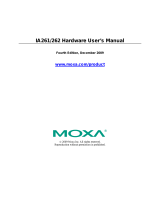 Moxa Technologies IA262 User manual
Moxa Technologies IA262 User manual
-
Moxa IA261-I/IA262-I Series Quick setup guide
-
Moxa IA261-I/IA262-I Series User manual
-
Moxa DA-661-16-LX User manual
Other documents
-
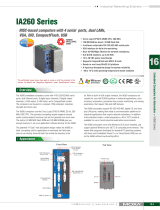 Moxa Technologies IA260 User manual
Moxa Technologies IA260 User manual
-
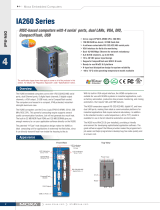 Moxa Technologies IA260 User manual
Moxa Technologies IA260 User manual
-
Add-On Computer Peripherals (ACP) ADD-SERIAL-SERV-16 Datasheet
-
Palm CompactFlash 10/100 User manual
-
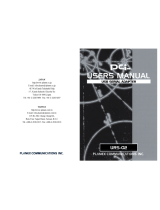 Planex URS-02 User manual
Planex URS-02 User manual
-
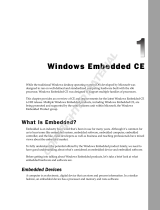 Wiley 978-0-470-37733-8 Datasheet
Wiley 978-0-470-37733-8 Datasheet
-
StarTech.com Serial over Ethernet Adapter User manual
-
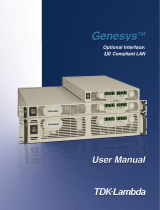 TDK-Lambda Genesys GEN 10kW User manual
TDK-Lambda Genesys GEN 10kW User manual
-
Hive Hub 360 User manual
-
Rosewill HIVE 1000W 80 PLUS Bronze PSU User manual








































